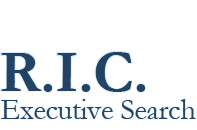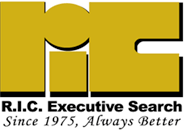Your Weakest Link
Extraordinary Lessons to Improve Your Business
By Tom Welch
At the core of every successful business, you will find dynamic leaders. No exceptions. That’s why I spend quality time on leadership understanding and execution with the leaders I coach.
We also discuss other critical aspects of business like strategy, structure, culture, collaboration, trust and accountability. The real payoff, though, in terms of greater productivity, profitability and employee satisfaction comes from getting better as a leader.
As convinced as I am about the extreme value of leadership, there is a but and the but is this. If you don’t have talented, hard-working, enthusiastic people to lead, how effective can you really be at leading?
With today’s high unemployment numbers, the common thinking is that it’s easier to hire top talent because so many people are looking for opportunities. That’s flawed thinking and here’s why. No matter the supply of labor, most companies are ill prepared to find, develop, motivate and retain a talent-rich workforce.
Company leaders like to talk about the idea that employees are their biggest asset, but their real efforts to better select and retain the best talent have been weak. Attempts at improvement tend to get squashed by short term business pressure. In a recent McKinsey Quarterly article, Making Talent a Strategic Priority, the authors stated that “. . .talent issues have unquestionably moved up the boardroom agenda but they have been insufficient at best, superficial and wasteful at worst.”
In terms of attracting new talent, those organizations who are putting best hiring practices to work today will reap the benefits of their efforts for years to come. The war for exceptional talent will only get worse as baby boomers retire in greater numbers and globalization increases.
No matter the size of your organization or business, the “right” talent can make a huge difference. And best practices to attract that talent don’t have to be difficult or complicated. Here are a few suggestions.
Think marketing because that’s really what you’re doing when you recruit talent. What is it about your company that would lure the best candidates? Build your recruiting message around that. Effective branding means that you should make your organization a place where people want to work.
Know what you are looking for in a new employee. What type of skills, talents, traits, interests, experience and education will best suit your needs?
Focus on superior performance. Ask yourself, if it’s a year down the road and I’m giving my new employee a performance review that is nothing short of superior, what has she accomplished? Now, analyze those accomplishments to determine what skills and talents would be needed to get those things done? That’s what you should look for.
Finally, improve the interviewing skills of everyone in your organization who is involved in the selection process. A critical ingredient of that improvement is a thorough understanding that a candidate interview is both an assessment and a marketing/sales undertaking. You must balance both facets to attract the best talent. When you do it right, your compelling message is delivered clearly and backed with stories of both company and individual employee successes because stories help to paint a picture in the candidate’s mind.
The importance of these practices has become very clear to me in my 35+ years of locating executive talent for our clients. You can benefit from this expertise by following the above suggestions.
Remember to develop a deep understanding of what you need. Next, combine that understanding with a savvy approach to interviewing so you both intelligently assess candidates and create an air of enthusiasm surrounding your organization and the position for which you are recruiting. In today’s market for extraordinary talent, motivation has to take a front seat.
When executives and even many of those below the executive rank are considering an opportunity, they first contemplate the impact they can make. Next is the opportunity for growth. Then the leadership qualities of the person they will work for followed by the growth potential for the company and finally compensation. Since those are the factors top talent considers before agreeing to take on a new job, your mission, as the hiring authority, is to assess, communicate and then sell the company and the opportunity based on those factors. That approach will give you your greatest odds for success.
Those are some best practices. Those are some of the things we suggest to our partner clients and some of the techniques we have used to successfully locate top talent year after year. Now, you can use them to do the same thing.
Tom Welch, America’s Career Coach, is a leadership and peak performance expert. He is an executive coach to global leaders who want to accelerate business results. Tom helps people and organizations excel. Contact Tom at twelch@ricsearch.com or visit www.ricsearch.com
The preceeding article originally appeared on tcpalm.com

